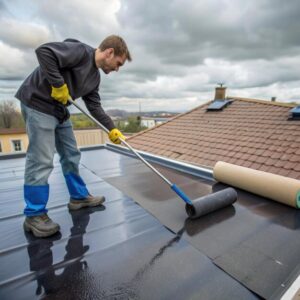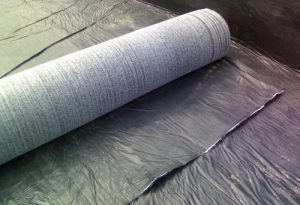What are the types of Geocomposites?
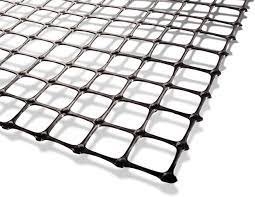
Geocomposites, by their actual nature, are derived from a well-thought-out combination of Geotextile, Geogrids, Geonets, and/or Geomembranes in a factory-fabricated unit. Any one of the above four Geosynthetics products can be joined with some other synthetic material (such as deformed plastic sheets or steel cables or indeed soil) to bring out the best productive efforts of the engineer and the manufacturer, in an excellent manner and at lower costs.
Geocomposites are prefabricated drainage products that straightly replace conventional granular fill. They normally comprise at least two different components; a three-dimensional polymer core, which functions as the transport medium, and a Geotextile filter fabric that lets liquids pass into the core but blocks the surrounding fill from washing in and binding the core. Their application areas are diverse and constantly increasing. The large functions performed by Geocomposites are separation, reinforcement, filtration, drainage, and containment.
Table of Contents
Types of Geocomposites:
Fiber Glass Geo Composite
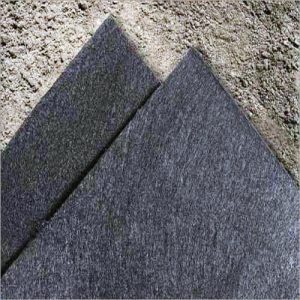
Geocomposites Fiberglass Geogrids with Geotextile (SDDG) is can be branched into two specifications: the first one is fiberglass yarn warp knitted on non-woven geotextile, the second one is fiberglass geogrids cemented to non-woven geotextile. The reinforced geotextile has the activity of anti filtration, isolation, and strengthening.
Geotextile – Geonets Composites
When one uses a geotextile across or under a geonets or makes a geotextile-geonets-geotextile sandwich, the separation and filtration functions are always contented, but the drainage function is vastly improved across geotextile by themselves. Situated horizontally, they make great drains to upwardly moving water in a capillary zone where frost heave or salt migration is an issue. When the water passes the sandwich it travels horizontally within the geonets and apart from where damage can occur.
Such geocomposites have as well as been used in intercepting and conveying leachate in landfills and for running vapor or water below pond liners of various types.
Geotextile – Geomembrane Composites
Geotextile are laminated either on one or both sides of a Geomembrane for multiple purposes. In the reinforcement region, the geotextile supply increased resistance to puncture, tear propagation, and friction coupled to sliding, as well as equipping tensile strength in and of itself. Quite frequently, however, the geotextile are of the nonwoven, needle-punched variations and are comparably heavyweight. In such situations, they work as drainage media, since their in-plane transmissivity element can conduct water or leachate apart from direct contact with the geomembranes.
Geomembrane – Geogrids Composites
Since a few types of geomembranes and geogrids can be produced from the same material (like high-density polyethylene), they can be combined (in fact welded) to shape an impervious barrier with enhanced strength and friction abilities.
Geotextile – Geogrid Composites
Those geotextile with less modulus, less strength, and/or higher elongation at failure can be extremely improved by forming a composite material with a geogrids, or also with a woven fabric scrim. The synergistic properties of every component usually improve the final product.
Geotextile / Polymer – Core Composites
When one takes a core in the structure of a quasi-rigid plastic sheet, it can be extruded or contorted in such a way as to let very large quantities of water flow within its structure. It hence acts as a drainage core. The core is shielded by a geotextile, working as a filter, either on one or both sides. Many systems are applicable. A strip, or wick, drain comes into this group and it might finally form a category in its own right, the word “geospacer” has been advised.
Here the polymer core is sometimes fluted for ease of conducting water and formed relatively 4 in. (100 mm) wide with a geotextile supplying across it. The development of geotextile polymer-core composites has all but eliminated traditional sand drains as a rapid way of consolidating fine-grained saturated soils.
GEOSYNTHETIC – SOIL COMPOSITES
As materialized by the geosynthetics clay liners, many other varieties of geosynthetics products and soil can be advanced. For instance, geocells are solid polymer strips and geotextile have been expertly arranged vertically in a boxlike fashion, put horizontally (standing vertically), and crammed with soil. Thus the material configures a cellular structure and performs with the contained soil, making an impressively firm mattress. Sizable earth embankments have been constructed on such structures with the possibility of supporting structures over weak soils concisely (namely an inexpensive mat foundation).
Drainage Geocomposites
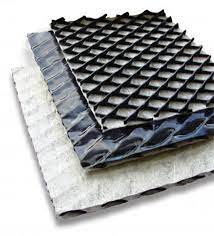
Finally, within this area of drainage geocomposites falls the category of prefabricated edge drains. These materials, usually 18 in. (45 cm) are situated adjacent to a highway pavement or railroad access for lateral drainage out of, and apart from, the pavement area. The systems are especially rapid in their installation and intensely cost-effective.
Applications Of Geocomposites
Geocomposites are used for primary functions of roadways such as separation, drainage, filtration, and reinforcement. Geocomposites can be used to further the strength and durability of underlying soil in a roadway.
Geocomposites, comprising a geonet bonded with geotextile layer(s) either on one or both sides are used for drainage from a basal layer in event of embankments and for drainage beyond retaining walls and/or bridge abutments. They have a very great in-plane drainage capacity opposite cross-plane drainage, thereby making them well suitable as drainage elements.
As the Basal layer (Horizontal Direction)
In the case of embankments across soft soils and the regions with the high water tables, it is a good practice to give a sand layer at the base of the embankment (at the terminal of subsoil and subgrade). This separator-cum-drainage layer of sand holds off fouling of subgrade with fine-grained subsoil reducing the excess pore water pressure in the bank thereby growing its’ stability and assuring uniform distribution of load over subsoil.
As Vertical/Chimney Drain
In the incident of bridge abutment and/or retaining walls, or beyond Reinforced Earth Retaining walls, they take over the natural graded filters and as well as eliminate the requirement for weep holes in bridge support and retaining walls.
Contact us now!
Ocean Non-Woven Pvt Ltd. manufactures Geosynthetics like Ocean Geotextile, Geomembrane Products, Geo Bags, Drain Cell, Drain Cell, Geo Composite, Geo Cell, Geo Grid, and Solar Panel Pump. These products are advanced employing the latest techniques of production in adherence to optimum quality standards.


